The History of Underfloor Heating
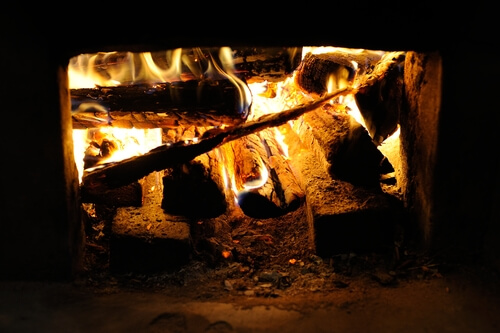
Underfloor heating throughout history has been used as a luxurious heating source right until the modern day. Although modern innovations have made it more accessible to a wide range of homeowners, it wasn’t so long ago that it was considered a luxurious addition to properties.
In this article, we take a look at the history of underfloor heating through the civilisations that invented, innovated and produced them, as well as how this has been adapted to the modernised systems that exist on the market today. If you are looking to find out more about an underfloor heating system on your own, then enquire with Easyflow online or over the phone.
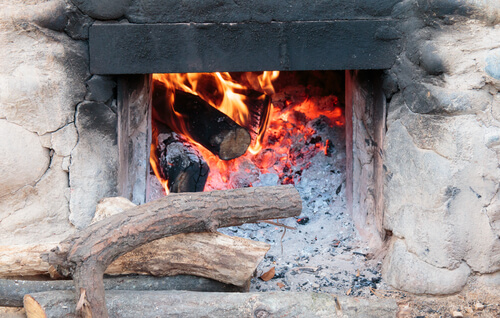
Who Invented Underfloor Heating?
No inventor has been attributed to the original creation of underfloor heating. The first discovered underfloor heating systems were made by the ancient Koreans. These systems were thought to have been invented in 5,000 BC! These floors were either heated or baked, which would later be coined as an ondol meaning “warm stone” around the end of the 19th century. Evidence suggests that early ondols initiated as gudeul, which was essentially a cooking and heating system in the home.
When a fire was lit inside the furnace to cook, the flame would extend horizontally because the flue entry was situated beside the furnace. If the smoke were to travel upwards, then the fire would extinguish too quickly and would not be able to cook food for long enough. Then a series of passages would guide the flame with the smoke, with entire rooms being built on the furnace flue to create rooms that could enjoy heating from the floor!
When Was Underfloor Heating Invented?
The first underfloor heating systems were invented as early as 5,000 BC. Modern systems, as we know them, started development in the 1800s and would not receive widespread standardisation until the 1980s. By 3,000 BC, the Koreans were using a fire hearth system, which was used as a form of heating as well as an early iteration of an oven. It has also been thought that a double hearth system was being used in 900 BC, with one hearth being used for cooking and another as a heating system.
As early as 350 BC, the Ancient Romans & Greeks were documented to be using their own version called the hypocaust. These systems raised the floor on pillars, allowing hot air to pass through the space beneath to heat the flooring. They were commonly used in bath houses and public buildings, but also in the homes of the noble and merchant classes.
The Movement Towards More Advanced Underfloor Heating Methods
By 500 AD, there was a noticeable difference in comparison to Asian and European heating. Europeans’ heating system of choice was the open fire system, whereas the ondol was being developed even further in Asia. The homes of the upper class and palaces in Asia utilised a more sophisticated form of the gudeul by around 700 AD.
That doesn’t mean underfloor heating was non-existent in Europe. Hypocausts were used extensively in both public baths and private homes around the Mediterranean. When we observe underfloor heating systems in 1400 AD, we see extensive and sophisticated hypocausts such as the Turkish Baths built by the Ottoman Empire. The concept of the hypocaust was still in use as late as 1904 at Liverpool Cathedral.
Though reliable for centuries, ondols and hypocausts contained dangerous levels of carbon monoxide, and leaks from the cavity floor or flue could lead to serious health risks. Thus, around the 1900s, many architects, inventors, and engineers began experimenting with more efficient and safer forms of in-floor heating.
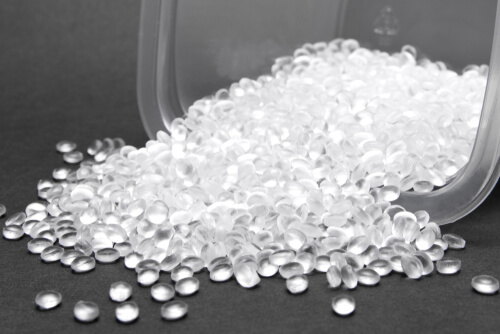
A Throwaway Discovery Leads to an Invention Vital for Modern Underfloor Heating Systems
In the 19th century, extensive research was being put into developing the modern central heating system using water boilers and piping systems. This included research into thermal conductivity, surface reflectivity and surface emissivity. A discovery that was a throwaway at the time, but would become a vital component in wet underfloor heating systems.
Hans von Pechmann in 1899 found a waxy residue at the bottom of one of his test tubes during an experiment. His colleagues Eugen Bamberger & Friedrich Tschirner coined this waxy residue as polymethylene. This was discovered during the auto-decomposition of diazomethane in ether but was eventually discarded. This polymer is virtually identical to polyethylene, which was discovered by Eric Fawcett & Reginald Gibson in 1933. This time, the results saw industrial use of polyethylene in 1939 as use for insulators for radar cables in the Second World War. Later, it would be used as flexible piping that makes modern floor heating setups possible.

Who Invented Modern Underfloor Heating?
Many public figures in the 1900s have been credited with laying the foundation for modern underfloor heating. One of the most notable was a British Professor named Arthur H. Barker, who discovered that small hot water pipes embedded in plaster or concrete were very effective as a heating system. In 1907, he patented the “panel warming” system and sold this to R. Crittal & Company. The concept of the patent was used to heat the Royal Libre building in 1909. This effectively marked the start of “wet”, or “radiant” underfloor heating.
These systems weren’t perfect, and most developed before 1937 failed because of problems with condensation buildup. These were mitigated through the use of ventilation systems, but it was obvious that more needed to be done to improve the design. That said, architects like Frank Lloyd Wright widely popularised the usage of modern underfloor heating in his projects.
The 1940s in the US saw a large-scale building operation that installed radiator-based heating systems into many new homes. This proved that water-based systems could be incorporated into any design project and would pave the way for the modern central heating system to be installed in a huge number of homes. In the 1960s, we saw the first wet underfloor heating system for the home being invented in Canada.
By the 1980s, modern wet underfloor heating systems were becoming commonplace in homes across the globe. Korea is arguably one of the leading users of the system, with it installed in nearly all its homes. Market acceptance in the West was slower, with cheaper radiator-based wet systems taking priority.
How Does Radiant Floor Heating Work?
While the ondol and the hypocaust distribute hot air through a cavity under the floor, radiant heating distributes heated water through a network of pipes. These pipes then emit heat to warm the room from the ground up. Using a network of thermostats and an underfloor heating manifold, tighter control of the distribution of hot water is managed automatically to ensure efficient heating that is only on when required.
In the 21st century, we saw the introduction of a new system in the form of electric floor heating. These took the technology of the electric blanket, first invented in 1912, where a mat containing electric coils would become hot when an electric current was passed through them. With new modern safety features and thermostat integration, these mats could be installed underneath a flooring finish.
Since these systems have become more accessible, they are also becoming a common feature in new-build properties as well as a retrofit option for older properties. This is because the design can be incorporated into the build of most properties without compromising integrity.

What can the Past Teach us About Underfloor Heating Systems?
Systems?
Once a fire-based system that was associated with nobility, expensive buildings and unique complexes, underfloor heating has become water-based, and is now a highly popular heating system for homes across the UK.
The history of underfloor heating systems spans thousands of years and allows us to conclude as to why these are such popular heating systems today. These weren’t just status symbols for the wealthy, but the means to heat rooms evenly and provide a comfortable experience. Architects like Frank Lloyd Wright and inventors like Arthur H. Barker recognised the appeal and the efficiency of the system, paving the way for widespread adoption and innovation.
Though price and an inability to retrofit were the primary obstacles in widespread underfloor heating uptake in the past, the modern solution has been developed to be as accessible as possible. Now it can be used as a replacement system for other conventional heating methods, such as radiators and electric heaters. You will typically enjoy more even heat distribution, and there won’t be any cold spots in the room that is being heated!
Luxurious and comfortable as well as efficient, underfloor heating is a great consideration for your home. When installed in tandem with liquid floor screed, it allows for a wide range of different types of flooring finishes.
If you are thinking about installing an underfloor heating system in your home, then contact one of our experts today!

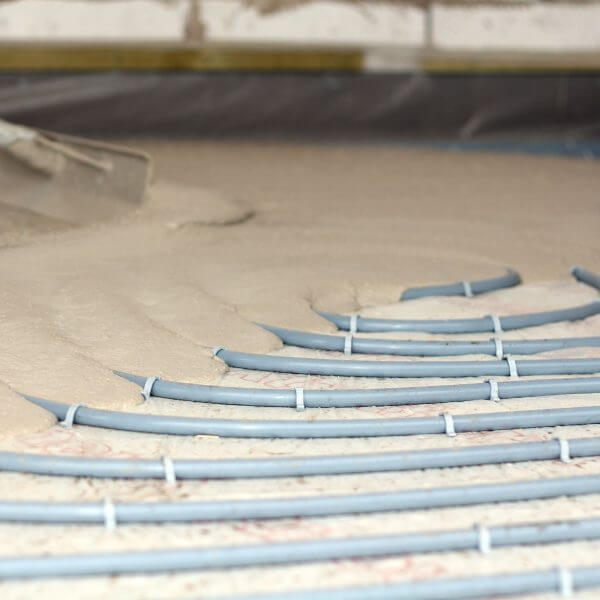

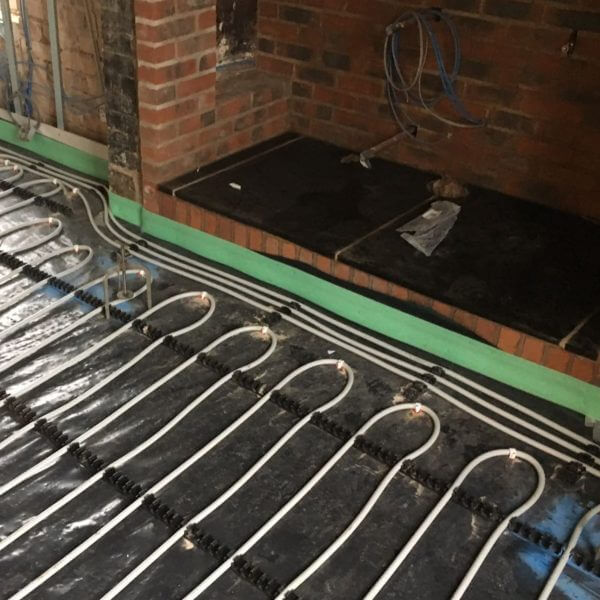
Where To Find Us